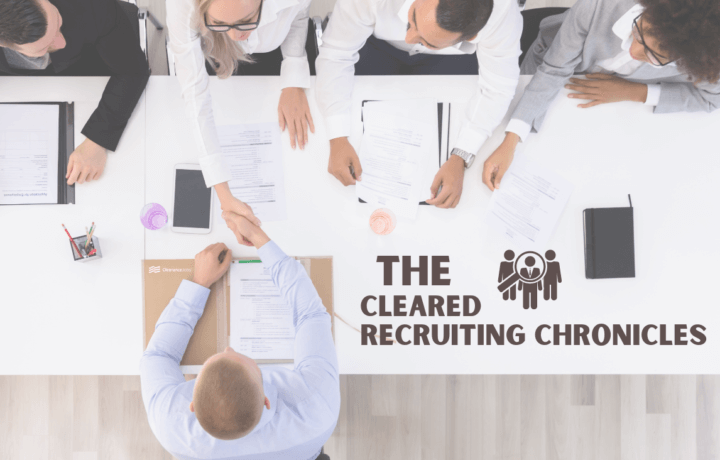Attracting and keeping top talent is still a challenge on the recruiting battlefield, which takes time out of a staffing team’s week. That’s why there are more robo-assistant tools like ClearanceJobs’ Workflow. Since the development of the Applicant Tracking System, defense recruiters have leveraged technology to save time in filling positions. But today, there is a new type of technology that is being integrated into talent acquisition: Artificial Intelligence. AI in defense recruiting is an emerging tech designed to cut down on time-consuming, manual tasks like sourcing, scheduling, or emailing candidates. Staffing teams can now pull in the power of AI to make better use of their little extra time.
WHAT IS AI IN RECRUITING?
The application of AI to recruiting is the automatic learning a computer does in relation to recruitment functions or tasks, and it is intended to streamline high-volume recruiting workflows. One task, for example, is software applying machine learning to resumes to match candidate qualifications to job requirements.
But it’s important to understand all of the AI recruiting resources at your disposal.
BENEFITS
Tools of these sort ultimately saves a recruiter’s time through the day by automating the sometimes-monotonous tasks. Recruiting is an essential function of the national security apparatus, and recruiters are expected to constantly do more with less.
Screening resume after resume as you search for the perfect secret squirrel is one of the most laborious pieces of DoD staffing, and vetting resumes for initial phone screens is anticipated to take almost a full day of a recruiter’s time for one billet filled.
- Converting passive candidates: Perhaps passive candidates are visiting your careers page and are perusing openings but are not following through with a job application. AI can help potentially convert these passive candidates with a chatbot! This tool allows candidates to ask questions and get more information that could nudge them in the direction of formally applying with your company, adding them to your Applicant Tracking System.
- Resume sifting / sourcing: These tools can screen candidate resumes, ensuring that the individual meets the minimum position requirements per your government customer. The tool will find relevant individuals through various databases and return a list of qualified applicants.
- Initial communication: Some of these applications can also blast out initial messages introducing yourself, your company or the position, and gauge interest.
- Scheduling: Scheduling can be a back-and-forth pain, particularly when juggling multiple calendars or candidates. Scheduling software can give a better experience for candidates and less headaches for the recruiting team.
- Video Interviews: Some of the high-ticket AI resources also integrate video interviews to understand characteristics or responses candidates will give to initial disqualifying criteria.
- Assessments: For high-level technical roles, automated assessments can be used for engineers, developers, data scientists, etc. The assessment can identify their abilities with different programming languages, too.
THINGS TO THINK ABOUT
Now, there are some pitfalls that recruiting teams should be aware of. With any new technology that solves some problems, it can create new challenges within your recruiting strategy. It should be noted that AI is a great tool, but not a replacement for humans as a part of the talent acquisition lifecycle.
- Experience and engagement: The candidate experience throughout the hiring process has been magnified with DoD recruiting being a buyer’s market. Competing for candidates is at an all-time high, and they would like to be treated as so. Therefore, every candidate interaction should not be swapped with an automated task. They will know that they are constantly communicating with a robot and will think if a recruiter doesn’t have time for personal interaction, then why would the company toward an employee?
- Bias: Think about the requirements or rules you are setting with AI. If you set this type of recruiting tool to parameters that potentially leave a certain age or women out of the applicant pool, you’re going to be left with processes that now discriminate against a part of the candidates you have available. So, double check the results of AI rules you set.
- Humans Needed: AI recruiting outputs should always be treated as suggestions – the recruiter should always be the final decision maker. Be available and make it known to the candidate that there is a human behind the keyboard. Candidates will feel it when they aren’t getting any TLC and will be turned off.
Think AI in augmented intelligence terms: you shouldn’t replace human interaction through AI completely. Instead, you should use this type of technology to enrich your recruiting efficiencies.




